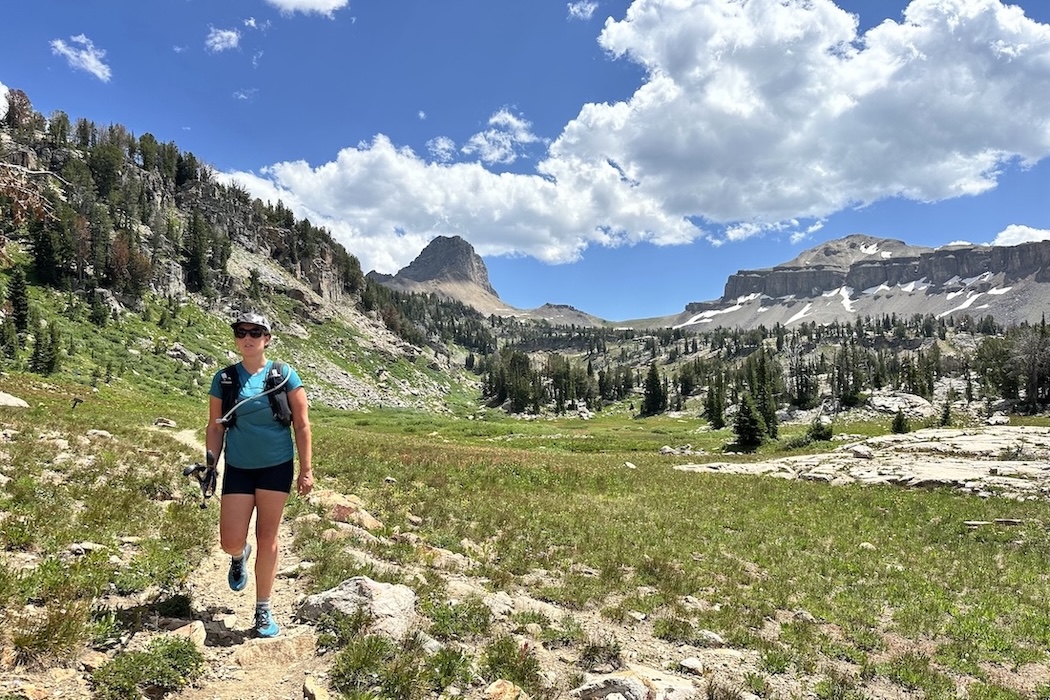
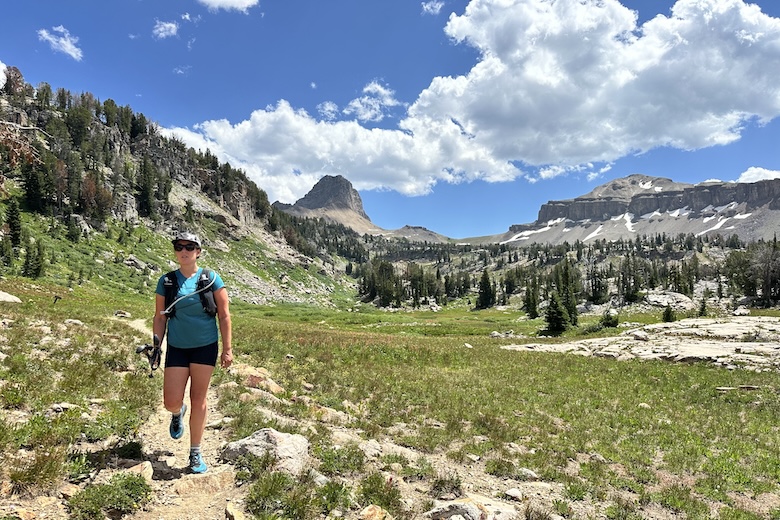
As lightweight gear gains popularity among outdoor enthusiasts, more hikers and backpackers are opting for trail running shoes or low-top hiking shoes instead of above-the-ankle hiking boots for all but the most demanding terrain. Lightweight hiking shoes and trail runners offer a bump in comfort, efficiency, and affordability over heavier boot-style counterparts, but with so many options, how do you decide which style is right for you? We've been putting a wide range of both hiking shoes and trail running shoes to the test for years, and have plenty of data and notes about the benefits of the two footwear styles for different scenarios. Below, we break down the key differences between trail runners and hiking shoes, comparing several key factors to highlight the pros and cons of each. For our top picks, see our articles on the best hiking shoes, best women's hiking shoes, and best trail running shoes.
Editor's note: This article was updated on September 8, 2025, to revise and update some of our product recommendations, expand several key considerations, and ensure all information and models were current at the time of publishing.
Hiking shoes, like the Salomon X Ultra 5 GTX and Merrell Moab 3, are a modern style of hiking footwear similar to a boot, but with a lower cut at the ankle. In general, hiking shoes offer similar stiffness and underfoot support as a hiking boot, but without the clunky feel of an over-ankle build. The generally tough construction—often featuring leather or durable nylon—is built to withstand hundreds of trail miles while offering good protection from obstacles like roots and rocks. Look for generous toe caps, thick outsoles with sharp lugs for traction, and medium-stiff midsoles that keep you isolated from rugged terrain. Many hiking shoes are available in waterproof versions as well, although keep in mind that a low-top shoe (compared to a mid-height boot) is inherently more vulnerable to water entering from the opening at the ankle and will also be less breathable than a non-waterproof model.
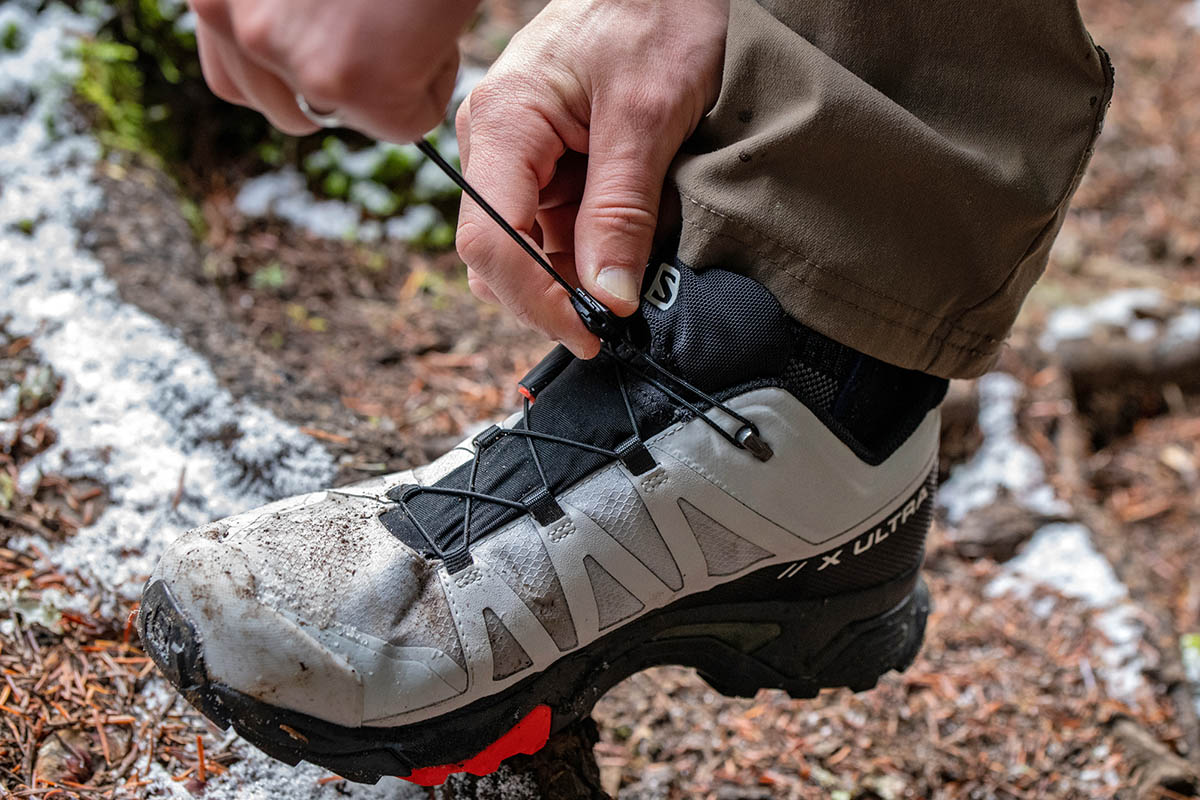
Trail runners are a style of footwear used by runners frequenting—you guessed it—trails. They’re built for light and springy movement, but with added protection, support, and traction for off-road travel. But trail running shoes aren’t only used by runners anymore. In recent years, they have been adopted by thru-hikers, ultralight enthusiasts, and even everyday hikers who like to travel fast and light. Some shoes in this category are running shoes first and foremost (like the Brooks Cascadia 19), while others are designed more for fast-and-light hiking and aren't as supportive for running, like the popular Altra Lone Peak 9. Within this broad category, look for low weight, heavy cushioning, mesh uppers, and stiffer midsoles and beefier toe caps than a standard road running shoe (but still less than a hiking shoe). Like hiking shoes, some trail runners also are available in waterproof models.
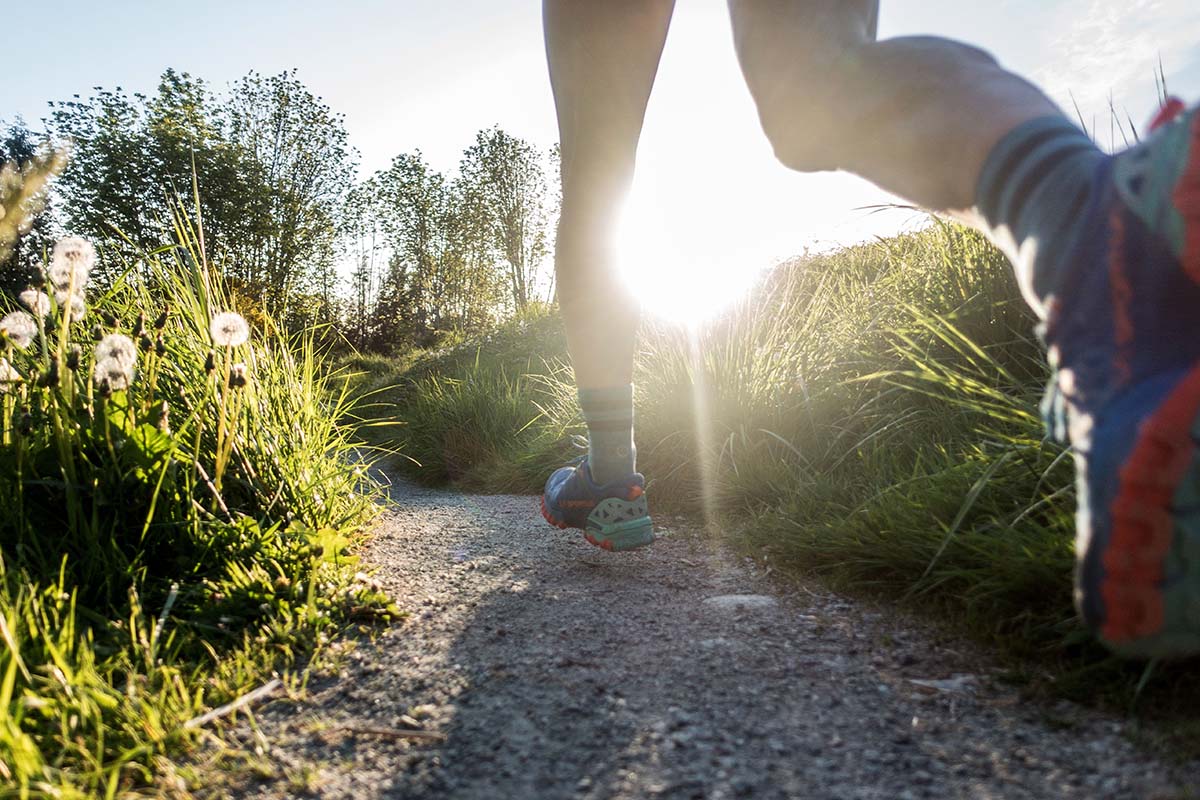
The distinction between hiking shoes and trail runners is not always clear, especially when it comes to models with a lightweight, mesh upper that still have more stiffness and support through the midsole and shank. These shoes—like the La Sportiva Akasha II or running-shoe-inspired mid-tops like the Hoka Anacapa Mid 2 GTX—are a good compromise if you want the pep of a trail runner combined with the support of a hiking shoe. Most of these shoes take a trail running shoe and build on it, adding stiffer and tackier soles and a bit more protection in the uppers. These shoes are outliers in their own categories and likely wouldn't be our first choice for either trail running or traditional backpacking, but their combination of support, breathability, and weight makes them ideal for fast-and-light endeavors. In this article, we'll break down hiking and trail running shoes into two distinct categories, but keep in mind that you can viably get the best of both worlds in some of these hybrid models.
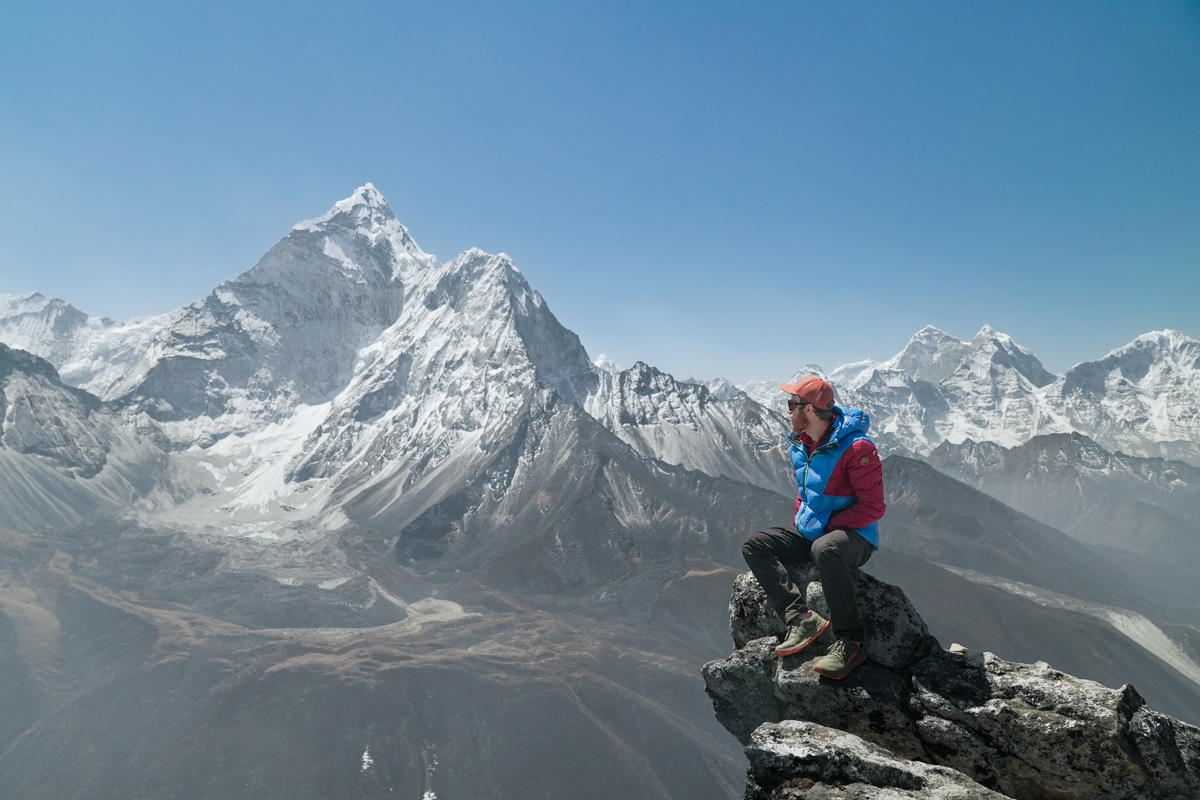
Cutting weight is one of the main reasons hikers make the switch from high-top hiking boots to low-rise hiking shoes, and many shave even more ounces by opting for lightweight trail runners. The average pair of hiking boots weighs well over 2 pounds, while most hiking shoes hover around 1.5 pounds for the pair. Meanwhile, the thru-hiker favorite Hoka Speedgoat 6 clocks in at 1 pound 3.6 ounces (for the men's) despite having a max-cushion build. As you might expect, choosing a lightweight hiking shoe trail runner helps save your legs and feet from some heavy lifting during long days on the trail.
If all other factors were equal, we’d always choose a lighter shoe over a heavier one. However, shaving weight comes with sacrifices in support, protection, and durability. Ultralight-focused trekkers or those traveling 20+ miles a day with a very light load might find the weight savings of a trail runner worth the compromise, but for a few ounces more, hiking shoes offer a nice boost in performance and durability.
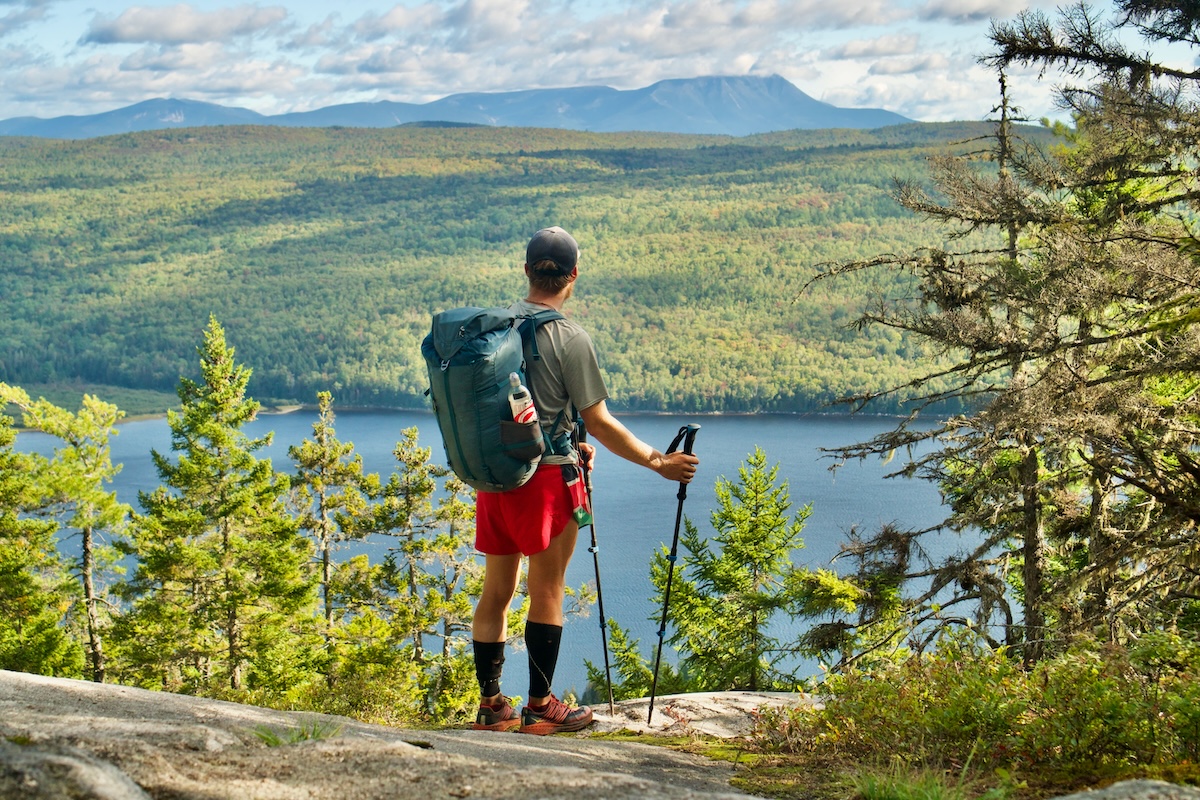
Everyday hikers usually lean toward hiking shoes over trail runners for the added support and protection. With a stiffer and more substantial midsole, more durable outsole and upper, and features like a toe cap and rubber rand, hiking shoes provide support on par with hiking boots, minus the high ankle protection. We appreciate the extra security when carrying a heavy load, especially while traveling on poorly maintained trails or scrambling off trail. On the other hand, trail running shoes are designed with fast and nimble movement in mind and thus give up a bit in terms of protection and support to remain flexible, sensitive, and lightweight.
That said, support varies significantly within each category. For example, many people wear the Altra Lone Peak 9 solely as a hiking shoe, and it's a great option for those with wide feet looking for a lightweight hiker. However, we've found it lacks the necessary support or cushioning for carrying a heavier load on your back. Comparatively, the La Sportiva Bushido III trail runner performs well while moving over a variety of technical terrain and has ample durability and stiffness for multi-day backpacking trips. Given the variability within the categories, we recommend doing your research and trying on shoes before buying to ensure you’re getting enough support. To help, our hiking shoe and trail running shoe round-ups have detailed descriptions of the fit, support, and ideal use(s) for each pair.
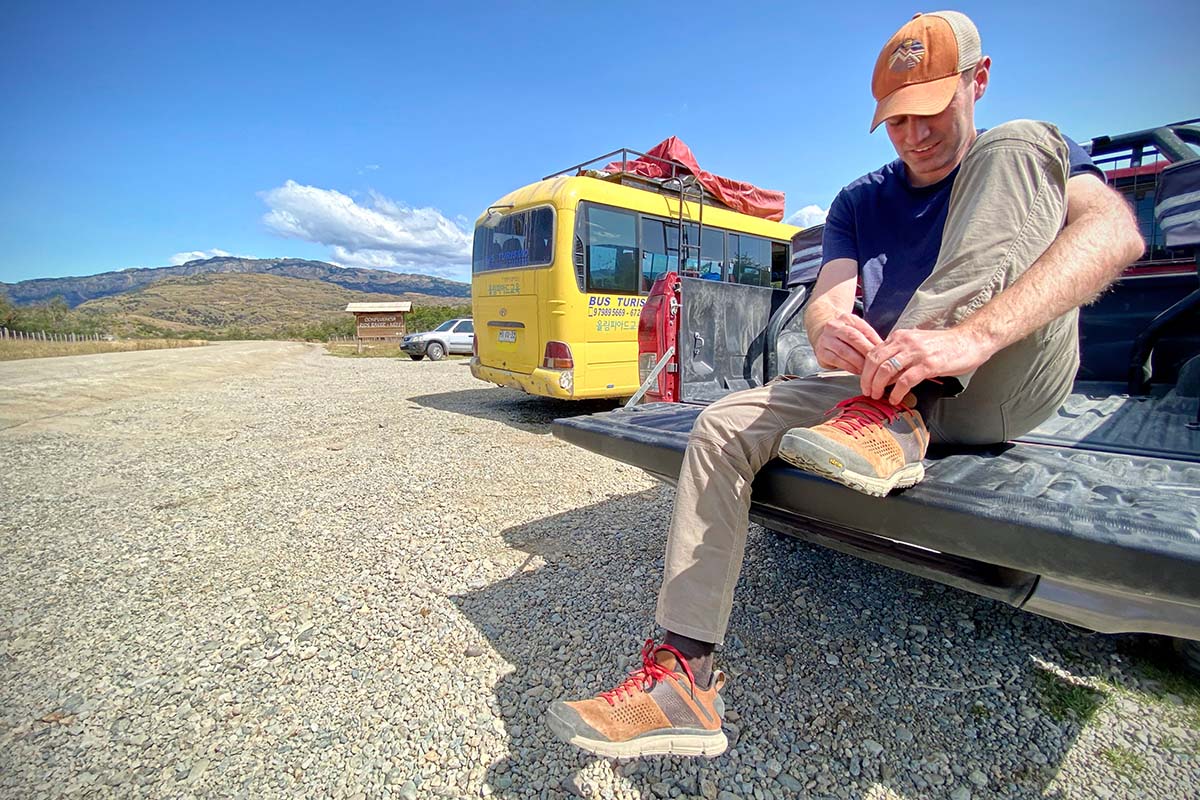
Durability becomes an important consideration when deciding between a hiking shoe and a trail runner. Hiking shoes have a tougher build—they’re often made with leather or durable nylon fabrics as opposed to mesh or thin nylon—and generally feature protective toe caps and medium-stiff midsoles. Compared to trail runners, hiking shoes hold up better under a heavy load and are designed to withstand rugged, abrasive terrain. Conversely, the lightweight fabric that makes trail runners so nimble sacrifices a good amount of durability, reducing their lifespan significantly. As a result, hardcore backpackers putting miles on their trail runners often go through multiple pairs each year.
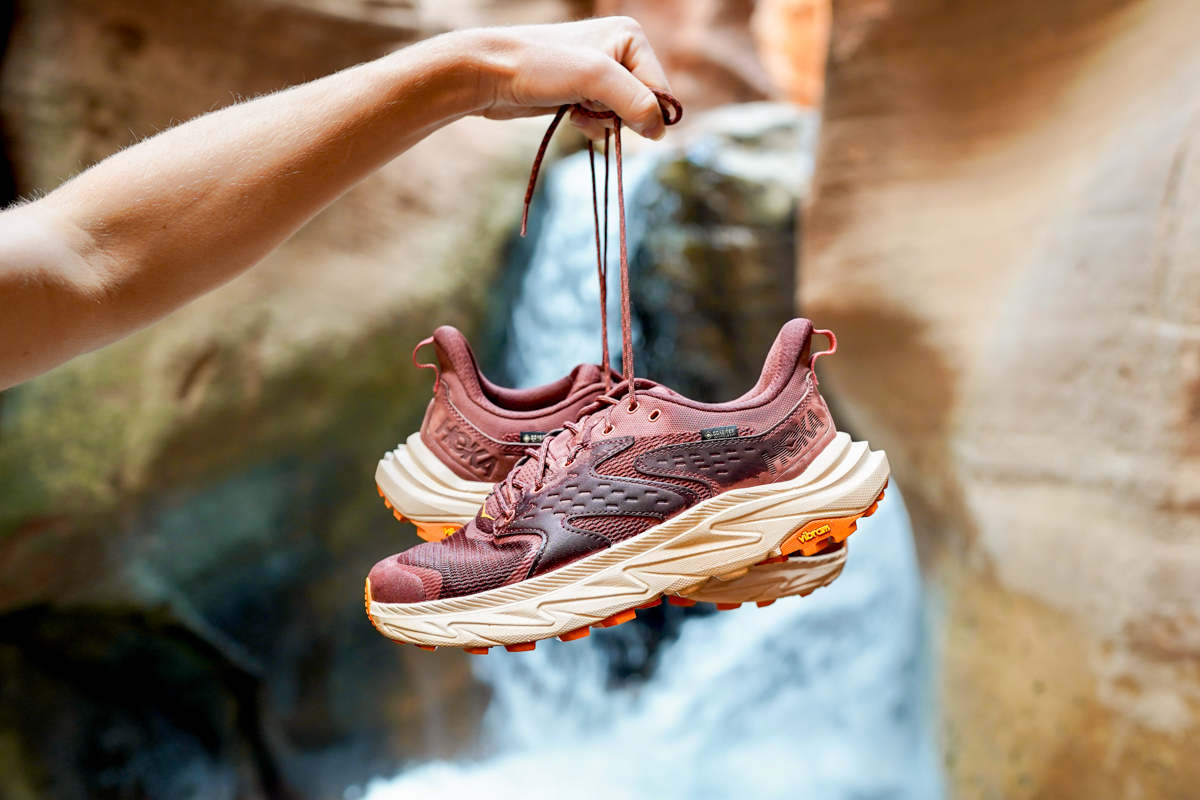
In general, the soles of hiking shoes and trail runners differ significantly in terms of tread patterns, rubber compounds, and stiffness. The sole of a hiking shoe is usually quite stiff—similar to that of a burlier boot—which lends extra support for moving over uneven and potentially treacherous terrain (the Merrell Moab 3 is a great example). The sole of a trail running shoe, on the other hand, typically has more flex to boost comfort while running, and open patches of foam to reduce weight. Many experienced hikers and backpackers prefer the greater freedom of movement and increased sensitivity of a trail running shoe, although it does take a bit of time to build strength, balance, and confidence over long distances and on variable ground. For this reason, if you’re just starting out, we usually recommend the stiffer sole of a hiking shoe before graduating to a trail runner.
.jpg)
Looking at the rubber in particular, there are large variations in tread depth and pattern between hiking shoes and trail runners. The tread of a hiking shoe is similar to a hiking boot: highly featured for excellent grip on variable surfaces, including rock, mud, sand, slippery tree roots, and snow. As for trail runners, it’s common to see a variety of sole patterns, each of which excels on certain types of terrain. For example, shoes with deep lugs like the Salomon X Ultra 5 GTX offer security in muddy or loose ground, while shoes with shallower tread (and sometimes even a smooth climbing patch on the toe) have grip better on rock. Because of this, choosing the right trail running shoe can be an involved and confusing endeavor. Unless you stick to one particular type of terrain, we recommend a more versatile hiking shoe.
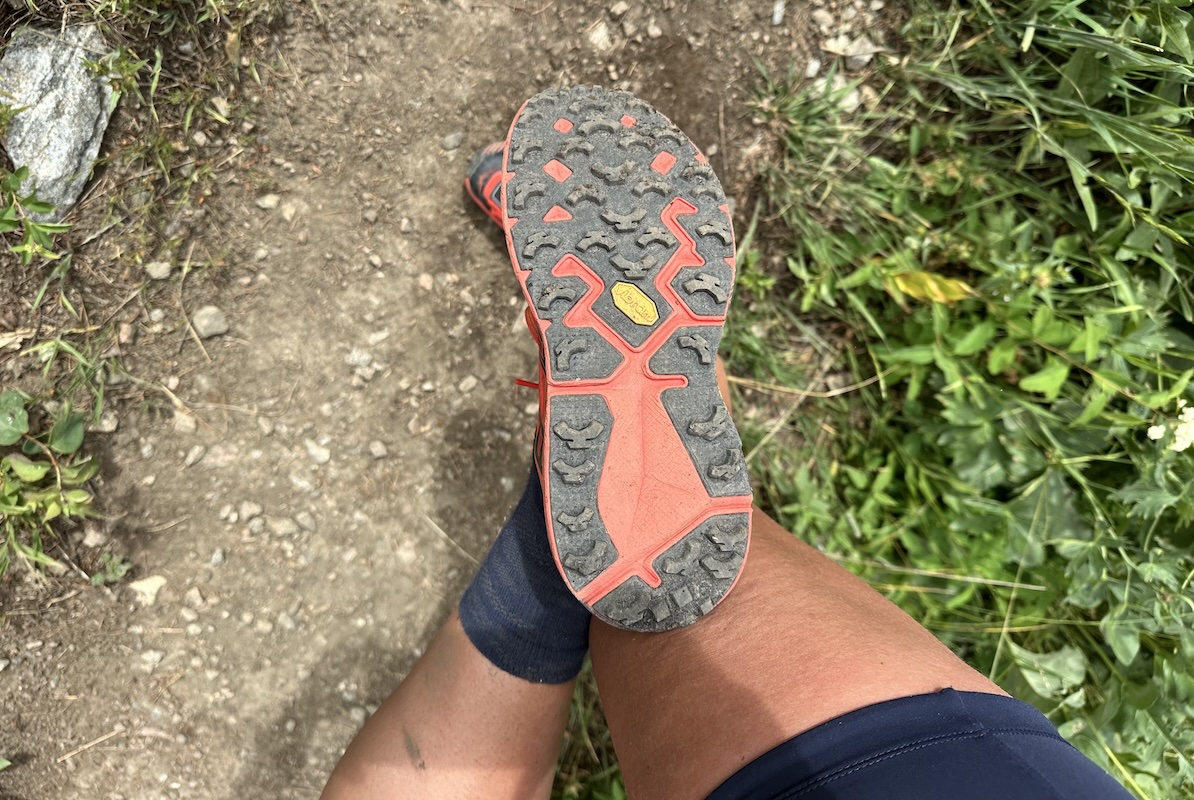
First and foremost: if a shoe isn’t comfortable, you shouldn’t be wearing it. Whether you're covering 20 miles or 2 miles in a hiking shoe or a trail runner, it should feel good on your feet. With that disclaimer out of the way, we believe the most comfortable hiking footwear depends on the individual and the objective. For those who are carrying light loads and moving quickly on well-maintained trails, a trail running shoe will likely offer the best combination of cushion, flex, and nimbleness. For those with heavier packs (around 25 pounds or more) or covering more technical ground, the stiffness and support of a hiking shoe will be the most comfortable choice. In the end, it all comes down to your goals—how fast you want to move, the terrain you hope to cover—and what you’re comfortable with.
.jpg)
Because trail runners are constructed with thinner materials and more mesh than hiking shoes, they're inherently more breathable. That said, there are a fair number of hiking shoes that give trail runners a run for their money, particularly those with generous mesh panels like the Hoka Anacapa 2 Low GTX and Adidas Terrex AX5. On the other hand, hiking shoes with leather or beefier nylon uppers sacrifice breathability in the name of durability and protection. If you're hiking in the summer or in areas where river crossings are inevitable, we love the ventilation and quick drying time of mesh shoes. Waterproof or leather model take much longer to dry, and we typically avoid thicker / waterproof shoes unless we're hiking in snow or shoulder-season conditions.
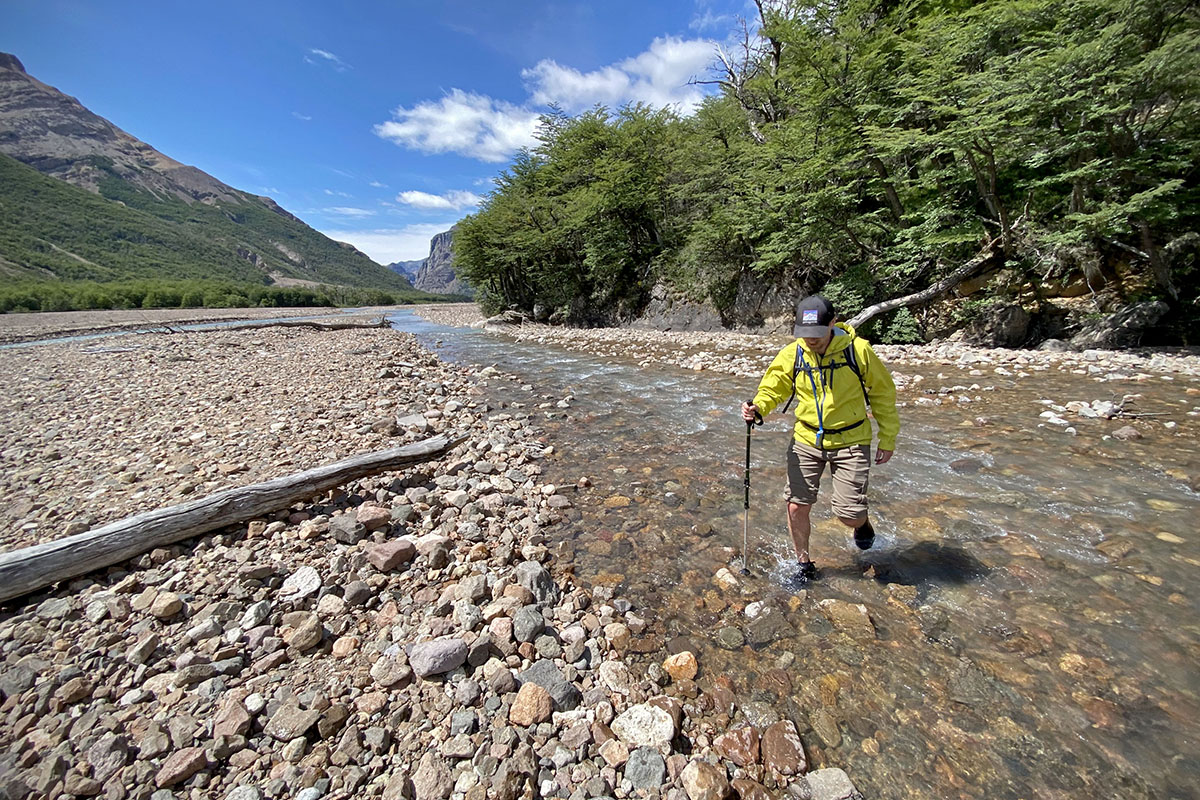
Many hiking shoes and some trail runners are available in both waterproof and non-waterproof versions (the Merrell Moab 3 comes in both standard mesh and waterproof models). In general, we've found waterproof trail runners provide protection on par with waterproof hiking shoes, but you get more waterproof options if you opt for a hiking shoe, which can increase your chances of finding the perfect model. Leather also has natural water-resistant properties, meaning that some leather hiking shoes can repel light precipitation and wet ground without the extra cost or weight penalty of waterproofing technology.
That said, waterproofing does mean compromised breathability in both hiking shoes and trail runners, which can result in uncomfortably swampy feet, especially during warm and dry days and with heavy exertion. As we mentioned, we love breathable shoes with thin builds and mesh uppers for summer hiking or when wet feet are inevitable. But in snow or during shoulder seasons, we’ll opt for a waterproof shoe. One of our favorite waterproof hiking shoes is Hoka's Anacapa 2 Low GTX, which boasts impressive breathability for a waterproof design and is notably more durable than other Gore-Tex shoes we've tested. Finally, if you're looking for true waterproof protection, a hiking boot will be the best option, as the mid-height build keeps out significantly more water than a low-top shoe.
.jpg)
In addition to the hybrids mentioned above, approach shoes are another category worth mentioning. As lightweight hiking shoes have become popular, many have embraced approach shoes as another option for longer hikes and backpacking expeditions. Typically, this style of footwear is used for “approaching” rock climbs, where the hike to the climb itself may be steep and rocky. However, the sole is much less effective for traveling over dusty trails, mud, and snow, which means approach shoes can feel slippery on these surfaces. The overall design also tends to be quite snug—ideal for added security while scrambling over rock, but often too constrictive for walking longer distances on flat trails. The laces of approach shoes will often extend further down the shoe near the tip of the toe box for a more custom fit, which also may feel awkward over long miles. Further, the flat, stiff soles of some approach shoes can lead to sore feet after extended miles, whereas the soles of trail runners and hiking shoes are more cushioned and flexible.
Overall, approach shoes are a bit of a dark horse in the world of lightweight hikers. In fact, we think of a shoe like the light and breathable La Sportiva TX4 EVO as a best-of-both-worlds combination of hiking support and rock-scrambling traction. We recommend approach shoes for routes where scaling steep rocky slopes may be the main obstacle, like the canyons of southern Utah. We will also choose this approach shoes for hiking to technical climbs. But for longer backpacking trips that aren’t particularly steep or rocky, we’ll still opt for the comfort, cushion, and trail traction of a pair of hiking shoes or trail runners.
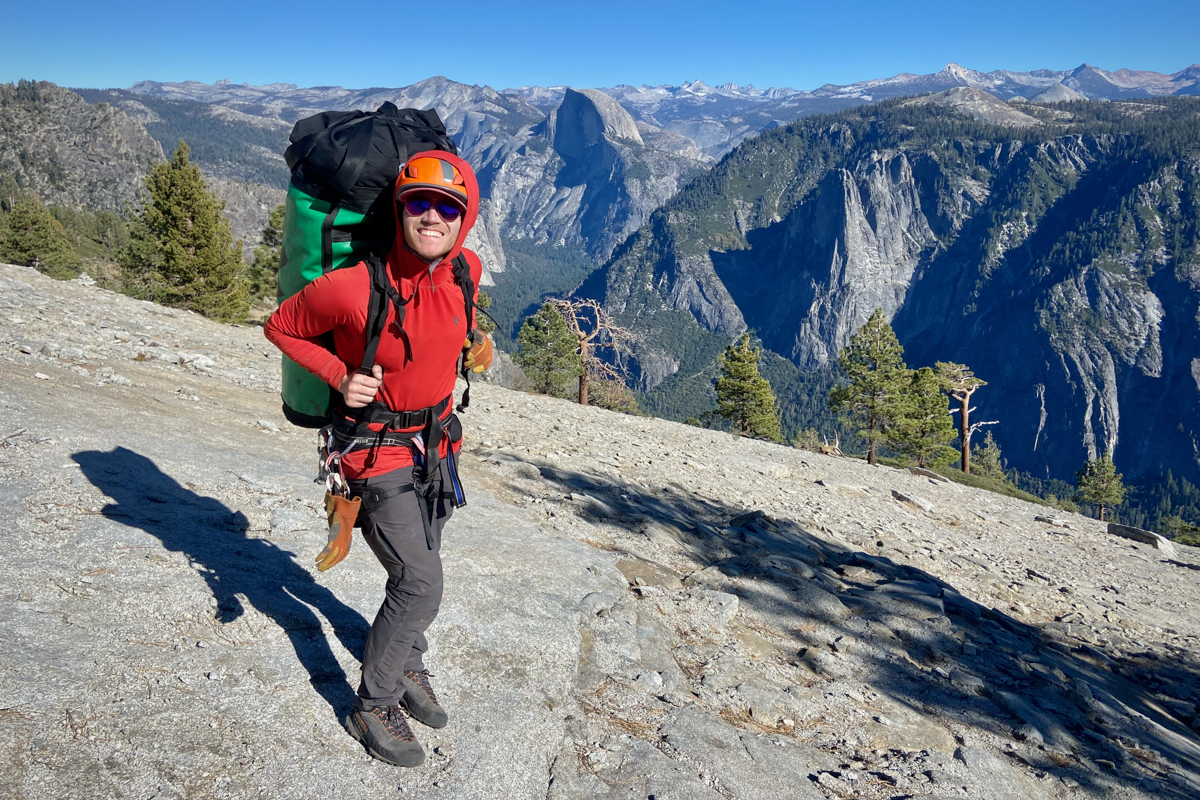
There are a number of factors that go into deciding whether a hiking shoe, trail runner, or approach shoe is the best tool for the trail, and the details can be overwhelming. But for the everyday adventurer, we’ve found it’s best to keep it simple: we recommend a hiking shoe for hiking, a trail runner for trail running, and an approach shoe for approaching climbs. Of course, for many hikers, there are exceptions to the rule: If you’re an ultralight thru-hiker or a long-distance day hiker, a light and nimble trail running shoe or hiking shoe hybrid is worth considering. If your hikes feature peak bagging, class 3-4 scrambles, or ridge traverses, a tacky approach shoe might be your best bet. But if you’re an avid hiker or backpacker looking for the best combination of comfort, support and protection, durability, and traction, look no further than a lightweight hiking shoe.
Whether you’re opting for traditional hiking shoes, trail runners, or approach shoes, below are our top selections for each category. For even more picks and in-depth information, see our articles on best hiking shoes, waterproof hiking shoes, women's hiking shoes, trail running shoes, and approach shoes.
Best Overall: Salomon X Ultra 5 GTX men's / X Ultra 5 GTX women's
Best Budget: Merrell Moab 3 men's / Moab 3 women's
Best Overall: Hoka Speedgoat 6 men's / Hoka Speedgoat 6 women's
Best for Technical Terrain: La Sportiva Bushido III men's / La Sportiva Bushido III women's
Best Overall: La Sportiva Akasha II men's / La Sportiva Akasha II women's
Best Budget: Merrell Moab Speed 2 Low men's / Moab Speed 2 Low women's
Best Overall: La Sportiva TX4 EVO men's / La Sportiva TX4 EVO women's
Best Hybrid Approach Shoe/Trail Runner: Scarpa Rapid LT men's / Scarpa Rapid LT women's
Back to Our Hiking Shoe vs. Trail Runner Guide See Our Hiking Gear Reviews